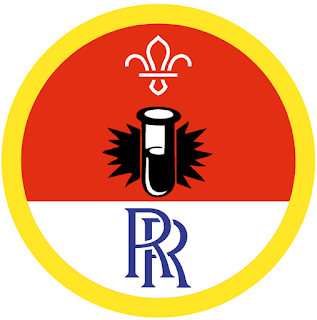Beavers and Cubs: Tower Building
Discover the secrets behind the world’s most amazing feats of engineering and build some of your own.
You
will need
- A4 paper
- Pens or
pencils
- Stopwatch
or phone
- Spaghetti
- Mini
marshmallows
Super structures
- Think
about some of the biggest or tallest buildings in the world. Which ones
can you name? What makes them special or interesting? Some structures to
mention:
- The Eiffel Tower. Built in 1889, over
5,300 drawings were made of this 324 metre high tower in Paris. Gustave
Eiffel designed the legs of the tower to stand at an angle of at 54
degrees for maximum wind resistance.
- The Great
Pyramid of Giza. The oldest and largest of the pyramids in Egypt, and the
oldest of the Seven Wonders of the World. It was built in 2580 BC.
Pyramids have a wide base and a narrow top, creating a very sturdy and
rigid shape.
- The
Golden Gate Bridge. Opened in 1937, this suspension bridge over San
Francisco Bay has a span of 1,300 metres and cost $35 million to make.
Suspension bridges work by transferring the weight of the bridge deck and
vehicles up through the suspender rods to the main suspension cable,
which then transfers the weight to the bridge towers and anchor rods
which go into the ground.
- Think
about a time they were on a bridge, a cliff, or a roof. What was it like?
Was the weather the same as it was down on the ground? How are tall
buildings made to withstand extreme weather conditions? The experiment
will look at the shapes and forces of buildings, and how they are all
pushing and pulling against each other.
- Draw some
tall towers. Which shapes are the strongest? (Triangles). Think about the
materials you will be using (spaghetti and marshmallows). Are your
structures going to be possible with the materials we have? How will you
make it both the tallest and strongest possible?
Get
building
- Once you
have decided on a final design for your tower, you should build it using
only the materials you’ve been given. The person leading the activity
should time 10 minutes for them to do this.
- Think
carefully about how you are using their materials. It’s important not to
waste them, or your tower won’t be as tall or as strong as it could be.
Reflection
This activity was about learning new skills.
What were the factors that made the towers strong? What made the towers less
sturdy? What kinds of jobs involve using these skills?
This activity was also about working in a
team. How well did your team work together to make the tower? Would you do anything
differently if you were going to build a tower again?
This
activity completes:
Cubs Scientist Activity Badge – requirement 2.d
Safety
Science
Supervise young people, and only do science
activities that are advised and age appropriate for your section. Test
activities first, to make sure you’re confident you can lead them safely. Use protective clothing where necessary.
Sharp
objects
Teach young people how to use sharp objects
safely. Supervise them appropriately throughout. Store all sharp objects
securely, out of the reach of young people.





